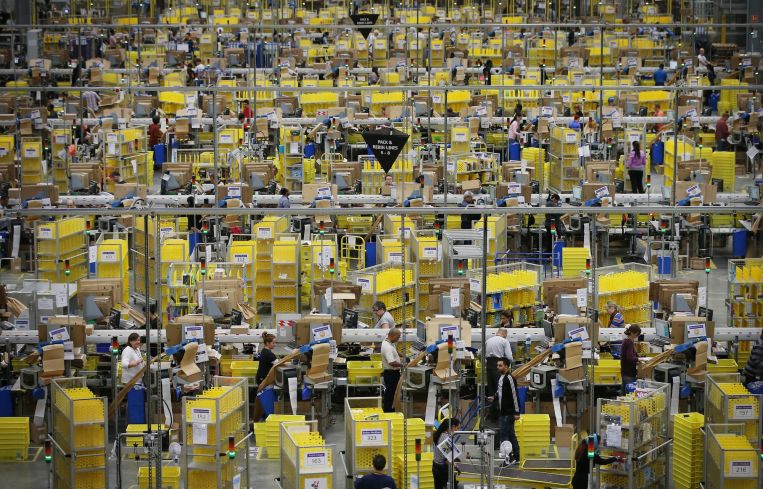With Unyielding E-Commerce Growth, US Demand Surges for Warehouses
The country needs another 330 million square feet of distribution space by 2025 to meet demand, a new report says
By Greg Cornfield June 23, 2021 11:15 am
reprints
As humans advance deeper into the digital world of e-commerce and online shopping, America will need to create a lot more physical industrial space to make it work.
E-commerce is expected to grow to become 26 percent of all American retail sales by 2025, with sales jumping $330 billion between 2020 and 2025. To handle the increase, CBRE estimates in a new report that the United States will need an additional 330 million square feet of distribution space, which represents 27 percent of the projected overall demand for industrial real estate in the U.S. through 2025.
Already on a runaway train, the pandemic further accelerated the need for industrial construction, which is set to jump 24 percent from 2020 data and reach a five-year high.
“E-commerce has grown steadily over the years, and it will continue at a strong pace for the foreseeable future,” CBRE’s John Morris said in a press release. “As a result, distribution and supply chain networks will continue to be under pressure to meet demand at a time when industrial vacancy is at record low levels. A significant amount of new construction will be needed in the next few years just to keep pace with robust demand.”
While the pandemic handcuffed retailers around the world and forced shoppers online, it added more fuel to the industrial real estate fire, driving most of the limited commercial real estate activity since the coronavirus crisis hit. Increased demand for online shopping is driving the construction of 342 million square feet of industrial space nationwide across 1,040 properties.
“While there is a sizable construction pipeline in the U.S., much of that new space already is leased to meet the demand of the past few years,” CBRE’s James Breeze added. “Moving forward, the challenge in many U.S. and global markets will be to produce enough new facilities to meet this rapidly expanding market.”


